J. Narayana Rao(jnrao36@rediffmail.com) on Nov. 28, 2009
SPACE JUNK AND SPACE DEBRIS
J. Narayana Rao
As we are facing environmental and ecological problems on earth, similar problems are also cropping up in Space. Within a period of 52 years only ever since the first satellite Sputnik was launched by USSR in 1957 we are encountering with the danger of environmental and ecological problems in Space.Traffic congestions as on earth are also not uncommon in Space. While more and more satellites are launched in Space, the care that has to be taken for these satellites to be in orbit safely is no less important than any vehicles moving on the road on earth. Satellites colliding is also taking place in Space.It may be surprising that how accidents and traffic congestion happen in space .
At present there are 240 Civil & Military Communication Satellites and more than 800 remote sensing reconnaissance Satellites are in Space.We are launching the satellites for using in Telecommunications,weather observations, navingation, reconnaissance and many other benefits for the mankind. Accummulation of Space Junk and Space Debris are the causes of environmental and ecological damage to the space.
ACCUMMULATION OF SPACE JUNK
Space debris also known as orbital debris space junk and space waste. Spent Rocket Parts, defunct and unsed satellites, exploision fragments, paint flakes, slags from solid reocket motors, small needles, nuts and bolts are the basic source of space debris and space junk. When these objects Collide with each other or explode or blasted they get fragmented into small pices. In a mid 2009 appraisal, the NASA estimated that the number of large pices of debris of 10 cms and over at 19,000, between 1 and 10 cms at 500,000 and smaller than 1 cm probably exceed tens of millions. A 1999 study estimated that there are some 4 million pounds of space junk in the low earth orbit. During the last one decade the estimated objects of over 10 cms in the Low Earth Orbit have more than doubled from 8,500 in 1990 to 19,000 in 2009. In 17 March 1958 US launched it’s second satellite the Vanguard I. It functioned only for 6 years and remained in space. It became as one of the longest surviving piece of Space Junk. On 24 July 1996 “Cerise” a French microsatellite in the Earth Low Orbit was hit by fragments of Arian upper booster which exploded in November 1986. On 29 March 2006 the Russian Express AM II Communication satellite was struck by an unknown object which rendered it inoperative.
Rocket Boosters contribute a good number of debris. On 11 March 2000 a Chinese upper stage booster exploded in orbit and created a cloud of debris. On 19 Feb 2007 a Russian Briz. M Booster stage exploded in orbit. On 24 January 78 Cosmos 954 of the USSR, powered by an onboard Nuclear Reactor fell from orbit crashing into the northwest territories of Canada. It scattered nuclear debris over a huge area. At present there are 37 Nuclear powered satellites put in space by USSR and US.The operation of these satellites is over. But the radioactive fuel in them is still hot and lethal.These are likely to fall on earth in future.
TESTING OF ANTI SATELLITE WEAPONS
Another major source of debris is testing Anti Satellite weapons. US, USSR and China contribute to this. The Chinese test of 2007 in which a defunct satellite was blasted produced 2,300 pices of trackable pices of debris of Golf Ball size. Over 35,000 pices of 1 cm or larger and 1 million pices of 1 mm or large size. In 1985 a US test destroyed a 1 tonne Satellite orbiting at 525 km altitude. It created thousandsof pices of debris larger than 1 cm. On 20 February 2008, the US launched a SM-3 missile to destroy a defective US spy satelliteat about 250 km altitude.
MATERIAL LOST IN SPACE.
Gemini 4 Astronaut of US, Edward White who performed the first Space Walk lost a Glove in Space. It stayed in orbit circling with a speed of 28,00 kmph. Michael Collins another Astronaut lost a Camera near the Space Craft Gemini 10.Soviet Cosmonauts pushed out more than 200 garbage bags from the MIR Space Station.Sunita Williams also lost a Camera in Space.
According to a BBC study, a 1 mm metal chip could do as much damage as a 22 caliber rifle bullet.A pea sized ball moving at a speed of 36,000 kmph is as dangerous as 400 lb safe travelling at 60 mph. A metal sphere the size of a tennis ball is as lethal as 25 sticks of dynamite.
PROTECTIVE MEASURES.
Damage to the space crafts from the space debris is protected by applying a thin layer of metal foil outside of the main Space Craft body.When the debris collide with the foil with high velocity,the debris will be vaporized and the plasma spreads out quickly. By this process damage to the inner wall of the Space craft is protected. Space crafts powered by Solar Panels are liable to be affected badly because the front portion of the panels are positioned directly exosed to the Sun.As a result they get punctured by debris. When large pices of space debrice collide with space crafts the damage is much heavy.
COLLISIONS IN SPACE.
The US Olympus space craft was rendered dead after it collided with a meteor. The first major collision with space debris was on 10 February 2009 when a deactivated 950 kg Cosmos and an operational 560 kg Irridium 33 collided at an altitude of 800 km over northern Siberia. Both the satellites were destroyed scattering considerable debris. In 2006 Atalantis Shuttle of US was hit by debris and got small hole through the radiaton panel. In 2007 Endevour was hit by unknown debris which bore a hole of several centimeters in diameter through the panel.
Most debris are likely to bur up in the atmosphere.But larger objects can reach the ground and present a risk. In the 2009 European Air and Space conference at the University of Southampton, UK, Hugh Lewis a researcher predicted that the threat from space debris would rise 50 percent in the coming decade and quadruple in the next 50 years.
With the ongoing programme of weaponisation space by the US in which even Nuclear Reactors are likely to be put in space to create sufficient energy to create Laser Beams the problem of Space Junk and Space Debris will further gets accentuated,
--------
Subscribe to:
Post Comments (Atom)

![[URGENT PLEA: In Update] EMERGENCY in GANGJEONG Since AUG. 24, 2011](http://2.bp.blogspot.com/-3iz8k-USXVY/TlmRYhhIYtI/AAAAAAAAL2c/9dbF85ZIkIs/s227/jejusit.jpg)
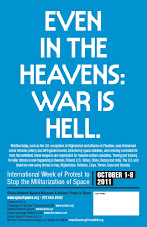
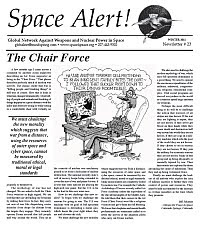

![[Solidarity from Japan for the Jeju] 253 individuals and 16 groups/organizations](http://2.bp.blogspot.com/_gnM5QlRx-4c/TR_YeNVE1yI/AAAAAAAAHWQ/ARyf6oQN0S0/S227/jeju_12_10j.jpg)
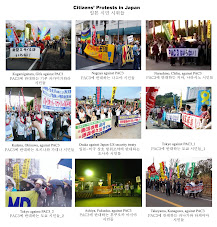
![[Translation] Korean organizations' statement: Immediately cancel the joint ROK-US drill Nov 26](http://2.bp.blogspot.com/_gnM5QlRx-4c/TPOE8VKXHFI/AAAAAAAAGlM/8lryt-8sFjc/S227/1.jpg)
![HOT! [Hankyoreh Hani TV] Beneath the Surface: the investigation into the sinking of the Cheonan](http://4.bp.blogspot.com/_gnM5QlRx-4c/TOI83qht8aI/AAAAAAAAGXU/22SW6Q5ntV8/S227/HaniTV%2BCheonan.gif)

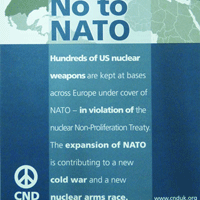

![[Translation]Statement against illegal inspection and unjust lay-off by the Kunsan USAFK!(Nov_2010)](http://4.bp.blogspot.com/_gnM5QlRx-4c/TOPLsVkZMqI/AAAAAAAAGZs/3YnnckIyAaY/S227/gunsan%2Bprotest.gif)
![[Translation] Korean organizations' statement against dispatching special force to the UAE on Nov.](http://4.bp.blogspot.com/_gnM5QlRx-4c/TOP95zHXlCI/AAAAAAAAGak/E0Ug1XtUFfM/S227/antiwarpeace.jpg)
![[Translation] Stop, Joining MD!: South Korean activists' statement and writing on Oct. 25, 2010](http://3.bp.blogspot.com/_gnM5QlRx-4c/TOP7Es4_2sI/AAAAAAAAGac/eWVMPD-U4p0/S227/StopMD.jpg)
![[In Update] People First, NO G-20 (Nov. 6 to 12, Korea)](http://2.bp.blogspot.com/_gnM5QlRx-4c/TJd53XBzHlI/AAAAAAAAFQo/ldO9JPE3eqo/S227/left21_G20.jpg)
![[International Petition] Stop US helipad plan in Okinawa to save great nature](http://4.bp.blogspot.com/_gnM5QlRx-4c/TKC2AHRNzBI/AAAAAAAAFUo/yGWXODTw_uM/S227/yanbaru_w.jpg)

![[Global Network] against the first launch of Quasi-Zenith Satellite, Japan, on Sept. 11, 2010](http://4.bp.blogspot.com/_gnM5QlRx-4c/TIowa1boy4I/AAAAAAAAFDI/82rAi98uq-c/S227/Qzss-45-0_09.jpg)

![[In update] Some collections on the Koreans’ protests against the sanction & war on Iran](http://4.bp.blogspot.com/_gnM5QlRx-4c/TJMvke6t8zI/AAAAAAAAFO4/tamQ8LUnOOA/S227/No+Sanction+on+Iran.jpg)
![[Three International Petitions] to End the Korean war and peace treaty(or peace resolution)](http://1.bp.blogspot.com/_gnM5QlRx-4c/THef7bzWxYI/AAAAAAAAE44/wwdzSDfYhdw/S227/border.jpg)
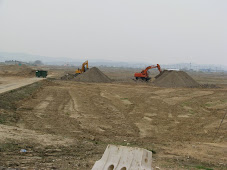


![[Collection of Documents] No Base Learning and Solidarity Program_Korea(June 14 to 20, 2010)](http://1.bp.blogspot.com/_gnM5QlRx-4c/TCTvVuN8NeI/AAAAAAAAEek/8vBJVaHdk10/S227/No-Base-banner.jpg)
![Site Fwd:[John Hines] A U.S. Debate coach’s research trip on the Issues of Korea](http://3.bp.blogspot.com/_gnM5QlRx-4c/TINCO36mzzI/AAAAAAAAE_w/Rds12NcBOXM/S227/Jeju-Peace-Tour.jpg)


![[News Update] Struggle Against the Jeju Naval Base since Jan. 18, 2010](http://1.bp.blogspot.com/_gnM5QlRx-4c/S1vvWaP25uI/AAAAAAAACkg/QvpW1tgOlKM/S226/scrum1.jpg)


![[Urgent] Please spread the Letter!: There was no Explosion! There was no Torpedo! (May 26, 2010)](http://4.bp.blogspot.com/_gnM5QlRx-4c/S_9JmsKEU7I/AAAAAAAAEP8/sAWjSPqxzUI/S227/grounded.jpg)
![Text Fwd: [Stephen Gowans]The sinking of the Cheonan: Another Gulf of Tonkin incident](http://1.bp.blogspot.com/_gnM5QlRx-4c/TAL_FtYKQ-I/AAAAAAAAERE/NEEMijiEcRM/S227/lee-myung-bak.jpg)
![[Japan Focus]Politics in Command: The "International" Investigation into the Sinking of the Cheonan](http://1.bp.blogspot.com/_gnM5QlRx-4c/TBMJ2syJzyI/AAAAAAAAEZU/uTYZccU5vyk/S227/wen_jiabao_and_lee_myungbak.png)
![[Japan Focus] Who Sank the SK Warship Cheonan? A New Stage in the US-Korean War and US-China](http://2.bp.blogspot.com/_gnM5QlRx-4c/S_iQ2vE5ZpI/AAAAAAAAEOU/Oo1SPcAe8FE/S227/buoy_map.gif)
![[Updated on 12/13/10] [Translation Project] Overseas Proofs on the Damages by the Military Bases](http://4.bp.blogspot.com/_gnM5QlRx-4c/S-qSj59gPLI/AAAAAAAAEGM/mwjlFtPE-jo/S227/missile.jpg)
![[International Petition] Close the Bases in Okinawa](http://3.bp.blogspot.com/_gnM5QlRx-4c/S8-z3DYNwNI/AAAAAAAADo4/OswTSchK09M/S227/2.jpg)

![[In Update]Blog Collection: No Korean Troops in Afghanistan](http://4.bp.blogspot.com/_gnM5QlRx-4c/SwnlLD9IewI/AAAAAAAAB9E/oUPssnpNidA/S226/No-Troops-to--Afghanistan.jpg)
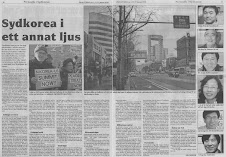

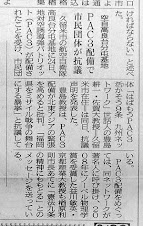

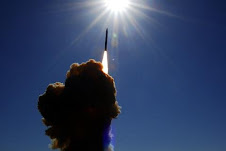






No comments:
Post a Comment